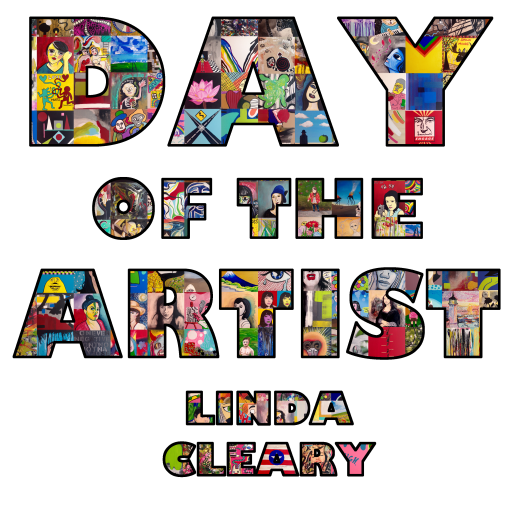It’s Day 147 and it’s another beautiful day. It was so nice to come down to my garage/art space and see how organized everything is. My back is still hurting, but I’m going to try and relax before heading out to my extra long therapy session today. I’m still wondering if it’s working. I’m doing a method called EMDR and it’s going to take a few more sessions to see how it’s working. Here’s to thinking positively about it! I’m really enjoying writing my new (gasp) teen romance novel so I’m going to try to work on that tonight as well. Today’s painting was enjoyable to paint. Very relaxing. Join me in honoring Korean artist Lee Ufan today. I grew up in Korea for a large portion of my life so it was great to honor a Korean artist that I never knew anything about!


Lee Ufan (Korean: 이우환, Hanja: 李禹煥, Korean pronunciation: [iːuhwan] born 1936 in Haman County, in South Kyongsang province in Korea) is a Korean minimalist painter and sculptor artist and academic, honored by the government of Japan for having “contributed to the development of contemporary art in Japan.” The art of this artist, who has long been based in Japan, is rooted in an Eastern appreciation of the nature of materials and also in modern European phenomenology.
Lee, the main theorist of the Mono-ha (“School of Things”) tendency in Japan in the

late 1960s and early 1970s, was trained as a philosopher. As a painter, Lee significantly contributed to Tansaekhwa, or Korean monochrome painting, the first artistic movement in 20th century Korea to be promoted internationally. He advocates a methodology of de-westernization and demodernization in both theory and practice as an antidote to the Eurocentric thought of 1960s postwar Japanese society. Lee divides his time between Kamakura, Japan and Paris, France.

Born in Haman-gun, Gyeongsangnam-do in 1936, Lee Ufan was raised by his parents and Confucian grandfather. Lee studied painting at the College of Fine Arts at Seoul National University for just two months and, in 1956, moved to Yokohama, Japan, where he earned a degree in philosophy in 1961. Whilst studying philosophy Ufan painted in a restrained, traditional Japanese style, eschewing the expressive abstraction of the contemporary Japanese Gutai movement.
Lee spent his early working years pursuing careers as an art critic, philosopher, and
artist. In Japan he became an active participant in the countercultural upheavals surrounding the Anpo Movement of the 1960s. He came to prominence in the late 1960s as one of the founders and theoretical leaders of the avant garde Mono-ha (Object School) group. Mono-Ha was inspired by the Arte Povera movement of the 1960s and Japan’s first contemporary art movement to gain international recognition.
The Mono-Ha school of thought rejected Western notions of representation, choosing to

focus on the relationships of materials and perceptions rather than on expression or intervention.

The movement’s goal was to embrace the world at large and encourage the fluid coexistence of numerous beings, concepts, and experiences. Lee U-fan’s position in the philosophy department at Nihon University in Tokyo earned him a distinguished role as the movement’s spokesman. In 1973, he was appointed Professor of Tama Art University in Tokyo and he stayed there until 2007. Yoshio Itagaki was one of his students in 1989-1991. He is Professor emeritus at Tama Art University.
In the mid-1970s Lee became a pivotal figure in the Korean tansaekhwa (monochrome painting) school, which offered a fresh approach to abstraction by presenting repetitive gestural marks as bodily records of time’s perpetual

passage. In his early painting series, From Point and From Line (1972–84), Lee combines ground mineral pigment with animal-skin glue, characteristic of nihonga painting in which he was trained. Each brushstroke is applied slowly and is composed of several layers.

Where the brush first makes contact with the canvas, the paint is thick, forming a ‘ridge’ that gradually becomes lighter. Rarely does his brush touch the surface more than three times. The artist refers to this as yohaku or the art of emptiness. In the From Point works he adopted a similar method in order to produce a fading series of small, discrete, rectangular brushstokes.
In 1991 Lee began his series of Correspondance paintings, which consist of just one or two grey-blue brushstrokes, made of a mixture of oil and crushed stone pigment, applied onto a large white surface. On average it takes Lee about a month to finish a painting, on canvases that typically measure about 60 by 90 inches, although they can vary in size from a few inches to 10 feet per side. He completes no more than 25 works a year.


Lee’s sculptures, presenting dispersed arrangements of stones together with industrial materials like steel plates, rubber sheets, and glass panes, recast the discrete object as a network of relations based on parity between the viewer, materials, and site. In his sculptural series Relatum, each work consists of one or more light-colored round stones and dark, rectangular iron plates.
Biography is from wikipedia.
I had different ideas for paintings for this, but then decided to use a pouncer with a watered down paint. When I was initially painting this, I wasn’t sure if I was liking it, but I decided to keep going and I think it turned out well. I think I captured Lee’s essence and style. I hope you enjoy my piece for today and I’ll see you tomorrow on Day 148. Getting close to 150 paintings! Then it’s 50 more and then only 165! Can’t believe I’ve gotten this far with so many changes and activity in my life the past few months without a hitch. 🙂 Best, Linda

Linda Cleary 2014
Acrylic on Canvas

Fading- Tribute to Lee Ufan
Linda Cleary 2014
Acrylic on Canvas

Fading- Tribute to Lee Ufan
Linda Cleary 2014
Acrylic on Canvas

Fading- Tribute to Lee Ufan
Linda Cleary 2014
Acrylic on Canvas

Fading- Tribute to Lee Ufan
Linda Cleary 2014
Acrylic on Canvas
